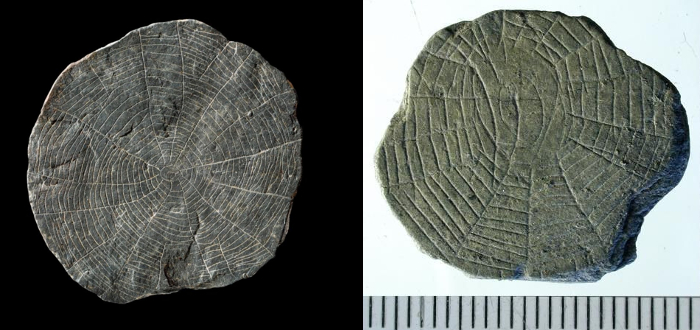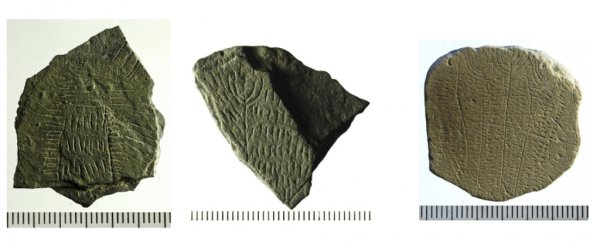The Danish island of Bornholm in the Baltic Sea has turned up a cache of treasures - over 300 carved stones, dating back to the Stone Age.
They're called "sunstones" ("solsten" in Danish), and they were found at a Stone Age archaeological site on the island called Vasagård, which has been puzzling archaeologists for years.
In use in the neolithic period between around 3,500 BCE and 2,700 BCE, the site was thought to have been a religious one. Since the entrances to the complex lined up with the Sun at the solstices, researchers hypothesise that it was a temple devoted to Sun worship.
Researchers have also discovered a number of objects they call "sunstones" - the first was discovered in 1995 at the nearby archaeological site of Rispebjerg.
These are small, usually disc-shaped rocks carved on one side, about 5,000 years old. Most have lines that radiate out from the centre, like the Sun's rays.
Over the last few years, archaeologists have excavated a large number of these stones and stone fragments, bringing the total to over 300.
And, while most seem to follow that Sun motif, there are a few unusual ones - four-sided stones carved with lines in a hatched pattern, perhaps representing fields, and round ones carved with a "cobweb" pattern.
 (Bjørn Skaarup, the National Museum of Denmark)
(Bjørn Skaarup, the National Museum of Denmark)
Some are only very lightly inscribed, while others are more elaborate, but the sheer number of them represents hours and hours of labour - yet to what purpose?
"That is the million-dollar question," Lars Larsson of the University of Lund in Sweden told Danish science website Videnskab earlier this year. "It is impossible to know precisely what they were used for."
There are a few hypotheses as to their purpose. Some seem to have been deliberately burnt and broken, which suggests they may have been used for funerary rites.
This would make sense since many were discovered in ditches thought to have been used as temporary burial mounds, where the body would decompose before being transferred to a permanent resting place.
They may have also been used as temple coins for entry into the temple, or counting stones, or for other religious rites, or carried around as personal amulets or charms. One hypothesis poses that the field stones may even have been used as a sort of map.
"Many of the stones are very worn, so it looks as though someone has walked around with them in their pocket," said Finn Ole Sonne Nielsen, the lead archaeologist at Bornholm Museum.
 (National Museum of Denmark/Bornholm Museum)
(National Museum of Denmark/Bornholm Museum)
But the field and cobweb stones (pictured above), which were only discovered in recent excavations around 2014, suggest that the stones had more than one use.
According to Flemming Kaul of the National Museum of Denmark, the field stones could have been used as part of a harvest ritual.
"I imagine that at a certain time of the year you had some magic rituals where you held a sun stone and let them pass over the stones, which by all accounts depict fields. The new stone opens up an entirely different understanding of the Stone Age worship of deities," he said.
As for the spiderweb, that could symbolise the underworld. People in the Stone Age would have been aware that spiders capture prey in a web and kill them, Nielsen said.
"I think it's a picture of another world. A symbol of the underworld," he said.
However, the only parallel he could find of a spiderweb as a metaphor for the afterlife was a French painting 4,000 years later. So the mystery remains.
Research into the Vasagård site and the strange stones is ongoing, but you can learn more about them in this peer-reviewed article published in Adoranten last year.
